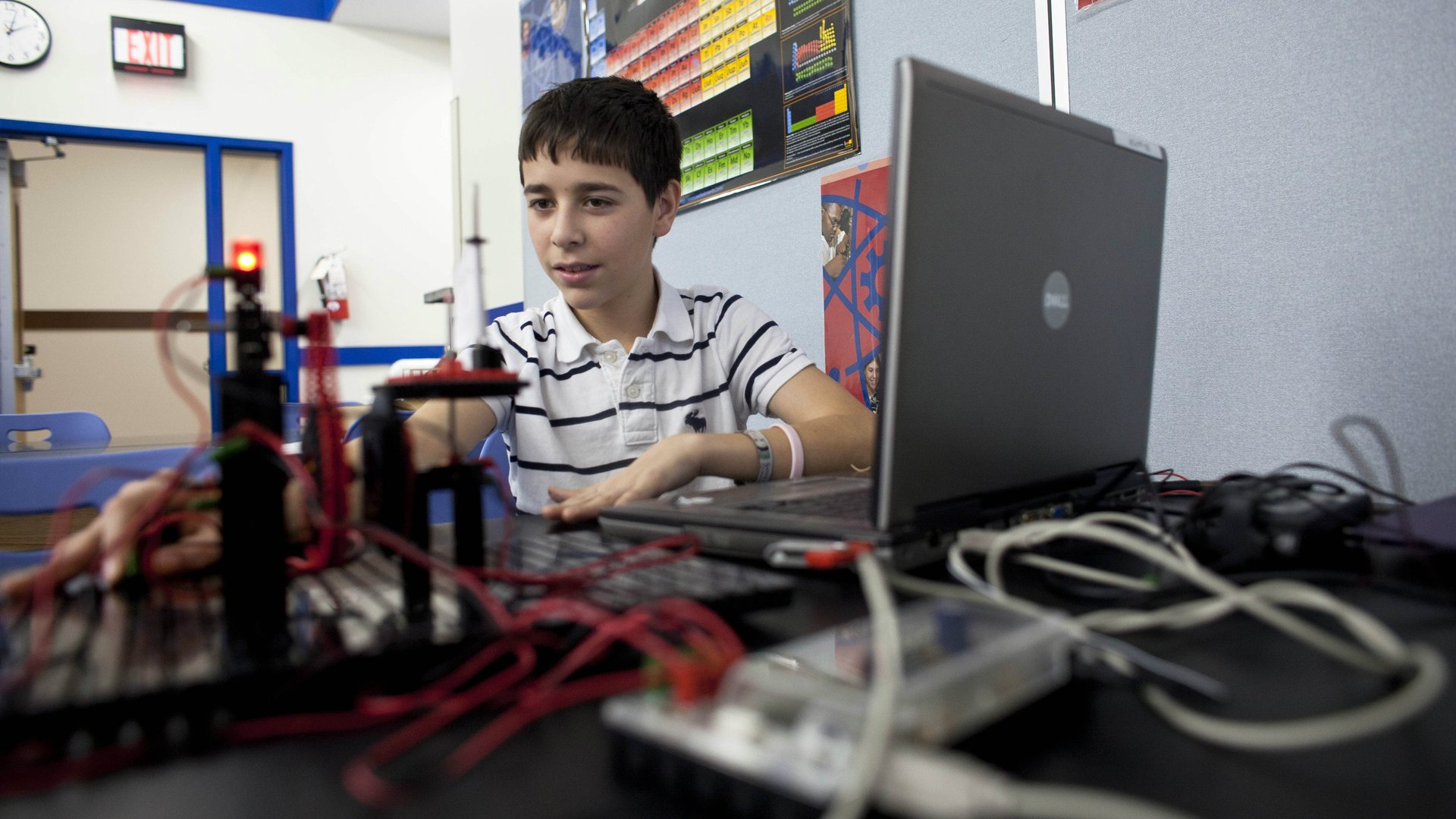Let kids learn by hacking their toys
Children, unlike most adults, have imaginations that are unconstrained by either themselves or society. For an 8- or 10-year-old, anything and everything seems possible. Burning with curiosity about the world around them, they can transform mundane objects into toys, invent entire worlds in a heartbeat, and become lost in daydreams one minute, only to fire off a barrage of (often unanswerable) questions the next. Then, they start to grow up. Curiosity seeps away. Self-consciousness kicks in. Until, slowly, the formalized structures within education, and the expectations of society, begin to take over.


Children, unlike most adults, have imaginations that are unconstrained by either themselves or society. For an 8- or 10-year-old, anything and everything seems possible. Burning with curiosity about the world around them, they can transform mundane objects into toys, invent entire worlds in a heartbeat, and become lost in daydreams one minute, only to fire off a barrage of (often unanswerable) questions the next. Then, they start to grow up. Curiosity seeps away. Self-consciousness kicks in. Until, slowly, the formalized structures within education, and the expectations of society, begin to take over.
It doesn’t have to be that way. More than any other moment in history, we are experiencing a seismic shift in creative power for kids. Born into a world of YouTube, social networks, and global interconnectivity, this is the first generation to be able to plug into a worldwide community instantaneously to make, share, and co-create—thereby dissolving linguistic, territorial, and even cultural barriers. With over 3 billion people already online, and over half the world’s population predicted to have regular internet access by 2016, exponential improvements in technology make both communication and consumption more accessible than ever before.
As a result, kids are already building and creating great things wherever you look. With almost 1.5 million subscribers to his YouTube channel, EvanTubeHD, an 8-year-old known only as “Evan” has blazed a trail as the leading toys and video games reviewer of his generation. In East LA, 9-year-old Caine Monroy created a games arcade from recycled cardboard and other everyday objects in his father’s used auto parts store. His entrepreneurial spirit and keen young business mind went on to inspire others to similar ventures across the world. Kelvin Doe from Freetown, Sierra Leone, meanwhile, wanted to make things, so he used electronic components that he found strewn in the trash. On his own, he experimented, learning by trial and error, and gradually improved the lives of his family and community. By using scrap to build generators and batteries, he enabled them, among other things, to light their homes at night.
So how do we empower the next thousand Kelvins, and the millions after him?
First, in response to a rapidly-evolving world, it’s time to reimagine the way kids learn. Not all children love education, but most are excited by learning—particularly if it’s experiential and they are learning for themselves. Instead of instructing kids to memorize facts or learn to crunch numbers, using essentially the same teaching model that has been deployed for the last century, we must recalibrate at least part of their education around critical thinking and problem-solving skills (alongside continued grounding in core subjects of course). As kids are already building and collaborating using technology in their spare time, it makes sense that they should learn this way in their bedroom and classroom alike.
Next, we should enable them to make what they play with—by equipping them with the skills and (now easily-accessible) tools to be creators, rather than mere consumers. Rather than submitting to “pester power” to buy their children the latest cool finished goods, parents should consider giving toolkits. Instead of automatically ordering the hot new video game, we should allow young people to discover how fun and rewarding it can be to create a video game for yourself. Instead of kids racing box-fresh radio-controlled cars, they should be encouraged to learn how to assemble one and make it autonomous by coding its routes.
Third—and this is no doubt the toughest to pull off—we need a paradigm shift in the way we adults look at young people around the world. Today, there are no real obstacles to changing the way children learn, and nothing to stop us from handing them the tools with which to experiment. But the onus is on adults to view and treat kids differently, giving them more responsibility—at least in some areas of life. We need to have confidence in their capabilities, even at a young age, and even when they fail—instead of waiting until they are graduates before we learn to trust them, when it’s too late.
With technology at their fingertips and computer processing power increasing exponentially, no generation has ever been better-placed or better-equipped to lead a global movement of makers. For the very first time, an innovation by a 10-year-old girl from Lagos (or Mumbai or Rio) has the potential to reverberate across cities and nations—indeed, through the entire global economy. They just need us to give them the tools. And then get out of their way.